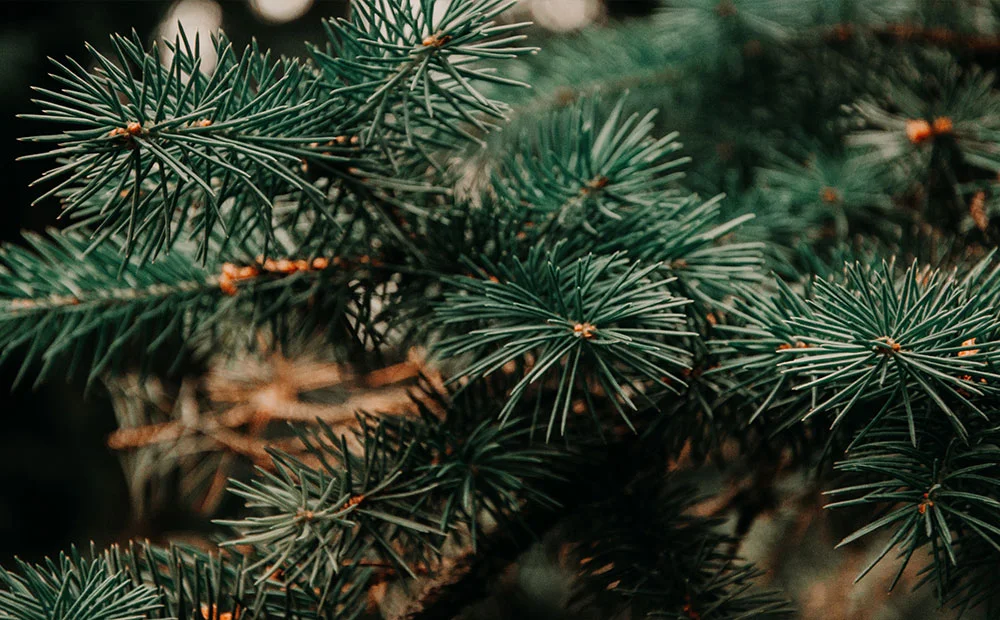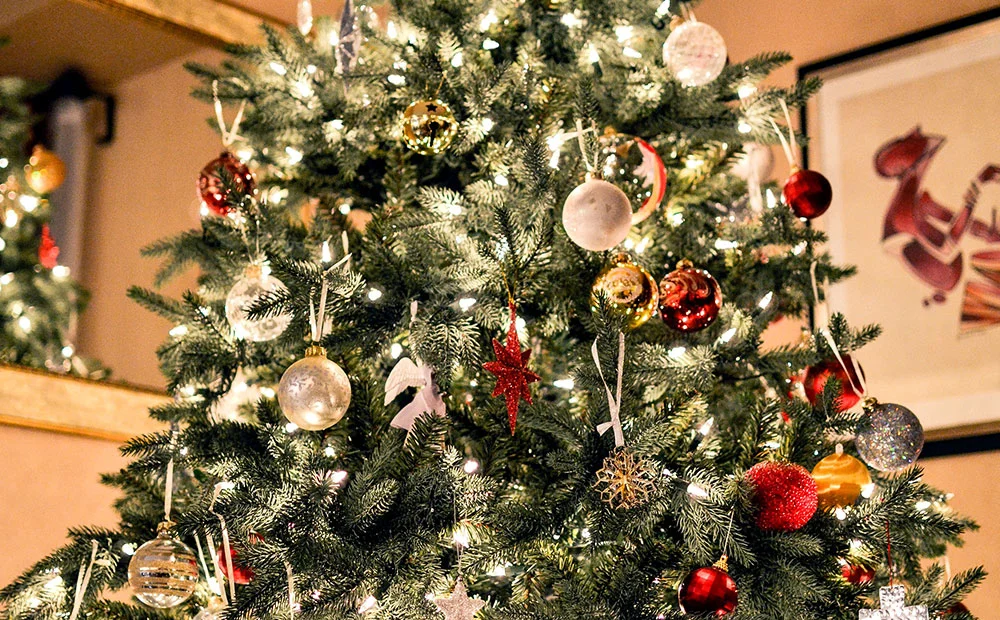CHRISTMAS TREES
It doesn’t truly feel like Christmas until we’ve brought home the tree! Decorating the tree as a family is as much of a tradition as the Christmas morning gift exchange. However, while you might have anywhere from five to fifty gifts under the tree at once, most families only get one tree! That’s why it’s essential to make sure we’re choosing the right tree and giving it the care it needs to last all season long.
CHOOSING A CHRISTMAS TREE
The three most popular Christmas tree families in Indiana are firs, spruces, and pines and you can tell the difference between the three by looking at their needles.
Pines have longer, flexible needles that grow in clumps of two to five, giving the tree a soft and plush look. The most popular pines in our region are Scotch Pines and White Pines, which both have a long-needled look. Scotch Pines are much sturdier than White Pines, making them better suited to heavy ornaments.
Spruce and fir needles don’t grow in groups and are much shorter and firmer, but fir needles are flatter than those of the spruce. Spruces are an excellent choice for outdoor Christmas trees, as they have a bit more of a “wild” look that looks great with nothing more than a few strings of Christmas lights. A great choice that is popular around the holiday season is the Blue Spruce.
Firs are the most common choice for indoor Christmas trees, and for a great reason - their branches tend to be denser, making them easier to decorate, and they give off a long-lasting fresh scent. The most popular varieties grown in Indiana are the Fraser Fir and Canaan Fir, both of which pack a tremendous alpine fragrance. The Canaan fir has flatter, softer needles, which might be a better fit for families with smaller children.
WHAT TO WATCH FOR
Once we’ve narrowed down the species of tree we want to bring home, we want to carefully inspect each tree to make sure we’re getting the one that’ll last us the longest!
Dried-out trees will have withered bark on the branches and outer twigs, and the needles will fall easily when the tree is shaken.
Healthy fir needles snap like a crisp snap pea, but if they’re brittle and dry, they crumble easily. Healthy pine needles are flexible and soft, whereas ones that have dried out are brittle and fragile.
Even in winter, it’s possible that the tree has some pests clinging to it. At this time of year, our houses already have as many guests as they can handle, so it’s best to give our trees a once-over for signs of pests before loading it into our vehicles.
We’re always well served to ask the person selling the trees when the trees were harvested. It’s always better to choose a fresh tree over one that’s been sitting for days or weeks.
BRINGING YOUR TREE HOME
If you’re buying your tree from a Christmas tree farm, you may be cutting it down yourself. To make this easier, saw off the bottom branches to expose a good 2-3 feet of trunk, which will allow you to cut through the tree trunk much more easily.
If you’re buying a pre-cut tree that was cut more than three hours prior to purchase, use a saw to cut a few inches off the bottom to help open up the trunk for water uptake.
If you have a stand that can handle a diagonal cut on your tree trunk, you’ll find that this helps your tree last longer as more surface area will be exposed to take in water. If you don’t trust your stand to hold a tree that’s been cut diagonally, a cut straight across the trunk is will be just fine.
Your tree will likely go through a ton of water in the first few days of coming to live with you. Once the tree has rehydrated, it should drink much more slowly. Until then, keep an eye on your water levels - you may need to refill the stand a few times daily as your tree adjusts.
Keeping a real Christmas tree may be a little extra work compared to their artificial counterparts, but we couldn’t imagine the holidays without the look and smell of real evergreen. With just a little TLC, your tree should last all the way to New Year’s Day!






